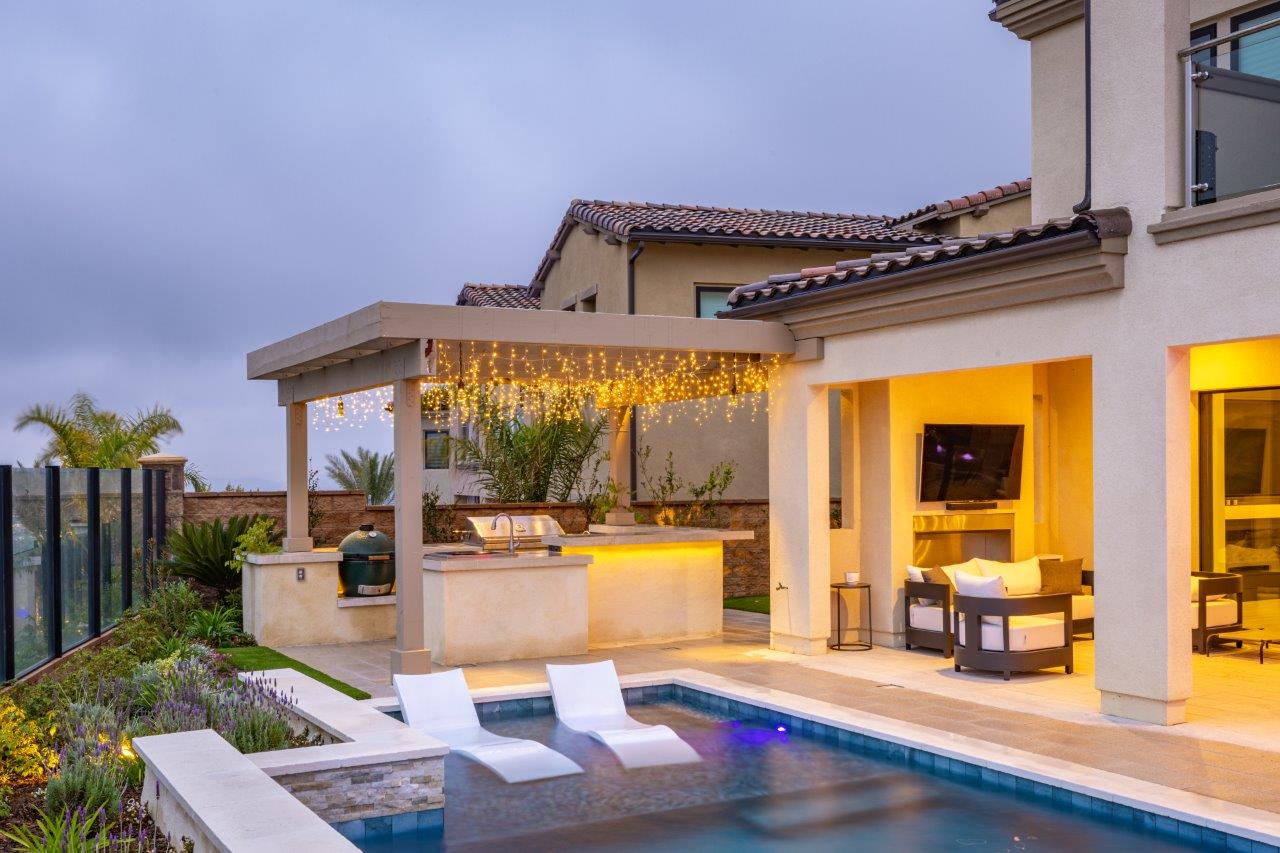You can have all the beautiful, fun components you want in the backyard, but the whole thing moves up a notch when the space feels right.
And while many factors, both concrete and abstract, play a part in creating a true feel-good space, proper spacing and dimensions are crucial.
Here, design professionals share advice and optimal dimensions for a number of backyard elements.
SPACING FOR PATIOS AND BACKYARD ROOMS
When it comes to sizing your outdoor rooms, things can be a bit subjective, depending on such factors as furniture size and location of support posts for overhead structures. However, experts offer some minimums.
For spaces meant to accommodate a 48-inch round table and four chairs, designer Scott Cohen provides a minimum patio size of 101/2 feet, but he tries to make it 12 feet. If a round table measures 60 inches, he’ll map out a 12-to-14-foot space.
“You want to be able to walk around the table, even after the chairs are pulled out,” says Cohen, garden artisan and president of the Green Scene in Chatsworth, Calif.
If the area will include the works — large sectional sofa, outdoor kitchen, fireplace, television area and a bar — Nick Hauk starts at 20-by-20 feet.
“And even that’s going to feel a little tight,” says the owner of Plano, Texas-based Pure Design. “I think 25-by-25 feet is a great size if you’re going for the whole package for outdoor living.”
For a more simple arbor that will contain a smaller sofa and maybe a small fireplace, but no kitchen, 16-by-16 feet often works well, he adds.
TRAFFIC FLOW
You don’t want your clients to have to walk sideways as they move through the yard, so wide-enough walkways are crucial.
Ask clients what traffic will be like. Will they entertain regularly — even if it’s just hosting another family for dinner al fresco? If so, you’ll want the walkways to be 5 feet wide. This allows two people to pass each other comfortably or walk together side by side.
If you expect people to move through the yard by themselves most of the time, then many designers will make the walkway 3 feet wide. However, Hauk prefers to start at the Americans with Disabilities Act minimum of 42 inches, or 31/2 feet. If one of the users actually does use a wheelchair, he’ll try to make the walkway 51/2 to 6 feet wide, to allow both the wheelchair and another person.
If the clients plan to entertain large parties on a regular basis, Cohen will try to make the walkways 6-feet-wide — but only if it’s in scale with the lot, and it ranks in the priority list.
When considering traffic flow, also give careful consideration to stepping stones and stepping pads. Not only do you want to make them wide enough to accommodate one or two adults, based on expected traffic. You also want to pace them in line with a human stride.
The average person has a stride length of 2.1 to 2.5 feet, Hauk explains. So, generally speaking, 2 feet will be a touch too small, but 21/2 feet will usually work. But make special allowances for those who are substantially shorter or taller.
“I think if somebody is over 61/2 feet, you might want to go to a 3-foot stride,” he says. “But somebody between 5 to 6 feet, those are usually right around 2 to 21/2 feet, where you don’t have to take a double step [on a pad].”
COUNTERTOPS AND BARS

The industry-standard counter height is 36 inches.
However, in backyard applications, that may not always work out so cut-and-dry. You might use a thicker material on top, which could bring the countertop higher.
Before starting construction on the countertops, figure out what appliances you plan to install, and take care to leave the manufacturer-specified clearances. This also can affect the height of the counters.
“If the refrigerator is 34 inches, I can create a cutout on the bottom of my counter, or I can lift my counter to 37 inches,” says Cohen, also the author of The Big Book of Barbecue Plans. “I just have to know ahead of time.”
Anywhere from 35- to 37 inches should work for barbecue counter height, he adds.
Bar counters, on the other hand, should hover around 42 inches in height. This can vary by an inches or two. A bar counter should also include a 10-inch cantilever to accommodate people’s knees when they sit on a stool.
Ideal counter depths — the measurement from front to back — vary depending on the application. You’ll need at least 24 inches to accommodate drawers and cabinets, and 36 inches if you’re going to install a grill. This allows the hood to open.
Some appliances have gotten narrow enough to be accommodated by 24- or 30 inches of depth. However, Hauk doesn’t like to take his design cues from that. Instead, he wants to make sure the grill master has enough space to comfortably place a cookie sheet of steaks.
“I like 36 inches of depth,” he says. “That allows you to get the cookie sheet up there, and leaves you plenty of real estate so it’s not hanging off the edge.”
Depths also vary for bars. If they can be accessed from either side, you can make them wider — say, 24- to 30 inches. However, if people can only reach over the countertop from one side, keep it to 18- to 20 inches in width.
“You have to be careful, because sometimes a client is going to ask you for more counter space — they want deeper this or more that,” Cohen says. “You have to consider the ergonomics behind it, because the human body is only going to reach so far.”
PLANTERS AND TREES
When sizing planters, or creating openings in the hardscape for trees, consider how much space the plants need, as well as the room needed for a proper drainage system, if they’ll be installed.
While many designers will begin with 18-inch planters, Hauk finds that too restrictive. He starts at 3-feet wide.
“Anything narrower than 3 feet really forces your hand into doing some type of vine or climber in that bed — something that won’t grow out, but will grow up,” he says. “But when you start talking about quarterly or seasonal color, 3 feet minimum is great, but 5 is even better. It just allows you to get a little more volume inside those beds.”
Additionally, these widths make it easier to install an underground drainage system in the planters.
Trees need enough space to live. However, the damage done to them from being restricted won’t cause damage until well after the backyard construction is complete. To prevent customers from losing a tree two or three years down the road, take extra care.
“Trees don’t like it when you encroach more than half the distance of the canopy,” Hauk says.
If you will be designing a deck or other hardscape near a tree, measure how far the canopy overhangs the trunk. Then halve that distance. That’s the absolute closest you would want the deck to come to the tree.
For example, say the branches span 12 feet from the trunk. You would want to keep hardscape at least 6 feet away. Another way is to find out the canopy’s total diameter, then divide by four.



